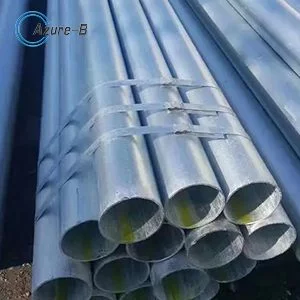The Strength and Durability of Galvanized Fittings
Galvanized fittings are an integral part of many industrial, commercial, and residential construction projects. Made of steel and coated with a layer of zinc, galvanized fittings provide superior corrosion resistance, strength, and longevity compared to untreated steel. In this comprehensive guide, we’ll explore the key benefits of using galvanized fittings and explain why they should be a go-to choice for your next project.
What Are Galvanized Fittings?
Galvanized fittings refer to piping, connectors, and other accessories that have been hot-dip galvanized. This means they have been coated with a layer of zinc to prevent rusting and corrosion. The zinc reacts with oxygen to form zinc oxide, an adherent material that seals out moisture and protects the steel underneath.
there are commonly used for pipe connections in domestic water lines, HVAC systems, irrigation systems, and industrial applications. The manufacturing process allows this to be threaded or welded, making them highly versatile. Key types of this include:
-Elbows: Allow piping to change direction. Available in 90° and 45° angles.
-Tees: Allow branch lines to split off the main pipe.
-Unions: Connect two pipes while allowing disassembly for maintenance.
-Bushings: Connect pipes of different sizes.
-Caps: Seal the end of a pipe.
-Couplings: Join two pipes.
-Nipples: Short length of pipe with male threads on each end.
Galvanized Vs. Black Iron Fittings
Galvanized fittings offer major advantages over traditional black iron fittings:
-Corrosion Resistance: The zinc coating greatly reduces corrosion from water and moisture. this can last 50+ years even in wet environments.
-Strength: Galvanizing makes the steel stronger and less brittle than untreated steel. The zinc helps resist impact damage.
-Minimal Maintenance: Due to their corrosion resistance, this don’t need frequent paint touch-ups that black iron requires.
-Ideal for Harsh Environments: Galvanized is perfect for outdoor use or highly humid indoor spaces like bathrooms, pools, or laundry rooms.
For maximum longevity in demanding applications, galvanized is hands-down the superior choice over black iron pipe fittings.
The Galvanizing Process
there are made by submerging steel parts in a bath of molten zinc. The zinc forms a tight metallurgical bond with the steel, coating all surfaces. This hot-dip galvanizing process involves several key steps:
1.Surface Preparation: The steel is thoroughly cleaned and degreased to remove mill scale and impurities that could impair bonding.
2.Fluxing: The steel is dipped in an ammonium chloride flux that further etches the surface for optimal zinc adhesion.
3.Hot-Dip Galvanizing: The steel parts are submerged in a kettle containing molten zinc at around 860°F. The zinc alloys with the steel surface.
4.Cooling and Inspection: Once removed from the zinc bath, there are cooled in the open air. The coating thickness and adhesion are tested.
5.Fabrication: Threading, welding, or additional fabrication is completed as needed.

The hot-dip process evenly coats interior and exterior surfaces for complete corrosion protection.
Benefits of Using Galvanized Fittings
There are many excellent reasons to choose galvanized over black iron fittings:
-Long Service Life: Galvanized coatings prevent rust, greatly extending the working life of fittings. Life expectancy is 20+ years for black iron but 50+ years for galvanized.
-Strong and Durable: Galvanizing strengthens steel while maintaining its ductility. The coating resists impact, abrasion, and mechanical damage.
-Low Maintenance: Galvanized fittings stay corrosion-free for decades, eliminating the need for painting. They also don’t require joint sealants or compounds.
-Corrosion Resistant: The zinc coating sacrifices itself to prevent the underlying steel from rusting. Galvanized resists corrosion in wet environments.
-Good Conductivity: The zinc coating doesn’t degrade thermal or electrical conductivity, allowing fittings to be used for hot water lines, grounding wires, etc.
-Cost Effective: Although pricier upfront, galvanized fittings pay for themselves through dramatically extended service life and near-zero maintenance needs.
For maximum utility, strength, and longevity in exposed piping systems, galvanized fittings are the clear choice.
Key Galvanized Fittings Applications
Thanks to their stellar corrosion resistance, galvanized fittings thrive in these common applications:
-Outdoor Plumbing: For exterior water lines, galvanized is vastly superior to black iron. All outdoor supply pipes, joint fittings, and valves should be galvanized.
-Drainage Systems: Galvanized is ideal for underground drainage and sewer pipes thanks to its strength and long service life underground.
-Residential Water Lines: Galvanized pipes and fittings are commonly used for interior plumbing in bathrooms, kitchens, laundries, etc. where humidity is high.
-Swimming Pools: Galvanized fittings have excellent chemical resistance for pool supply and drainage piping.
-Marine Environments: For dockside piping and water lines, galvanized withstands the corrosive effects of saltwater.
-Industrial Process Piping: In chemical plants, food processing facilities, and other harsh industrial environments, galvanized fittings resist corrosion.
-Cooling Towers: Galvanized is the preferred material for supply and return piping in cooling towers due to wet, humid conditions.
Galvanized steel is suitable for hundreds of piping applications where unattended use and long service are priorities.
Installation Best Practices
Follow these guidelines when installing galvanized fittings:
-Use threaded seal tape or pipe joint compound on male threads to ensure leak-free connections.
-When tighteningjoints, use the proper sized wrench and avoid over-tightening.
-Support piping with hangers at appropriate intervals to prevent strain on fittings.
-For buried applications, use pipe sleeves where pipes pass through concrete to prevent corrosion.
-When mixing with black iron, install galvanized fittings downstream to prevent internal corrosion.
-Use dielectric unions when connecting galvanized pipe to copper to prevent galvanic corrosion.
-Ensure galvanized fittings meet ASTM A153 standards for material thickness, zinc coating weight, and performance testing.
Following best practices for installation will maximize the lifetime and performance of your galvanized fittings.
Trust Galvanized Fittings for Your Project
With their unrivaled corrosion resistance, strength, and durability, galvanized steel fittings should be your first choice over black iron and plastic alternatives. Galvanized fittings exceed performance requirements for demanding residential, commercial, and industrial piping systems, both indoors and out. Thanks to protective zinc coatings applied during a meticulous hot-dip process, quality galvanized fittings will deliver maintenance-free reliability for decades. For your next project, choose galvanized fittings for long-lasting value and hassle-free service life.

